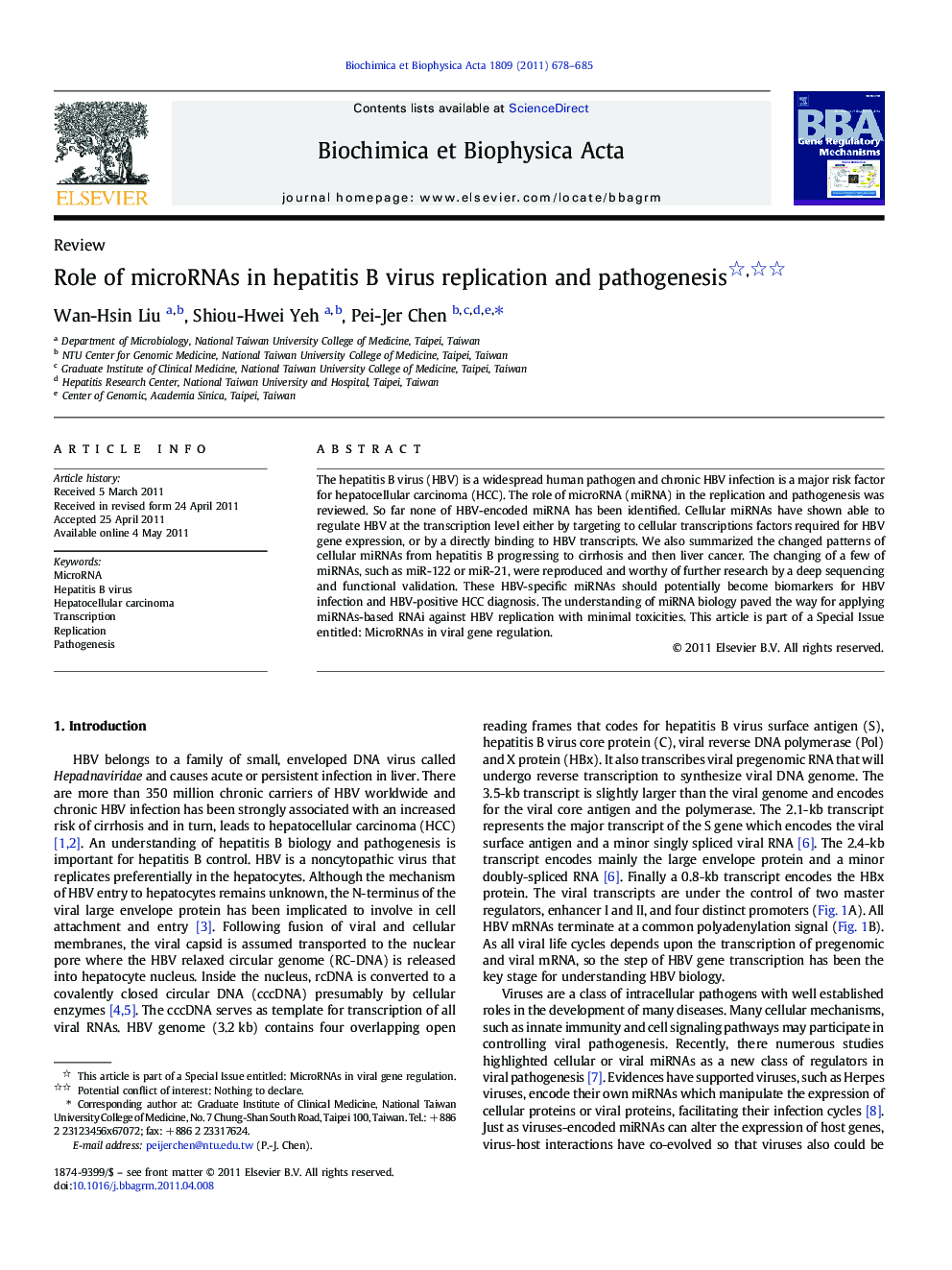| Article ID | Journal | Published Year | Pages | File Type |
|---|---|---|---|---|
| 1946609 | Biochimica et Biophysica Acta (BBA) - Gene Regulatory Mechanisms | 2011 | 8 Pages |
The hepatitis B virus (HBV) is a widespread human pathogen and chronic HBV infection is a major risk factor for hepatocellular carcinoma (HCC). The role of microRNA (miRNA) in the replication and pathogenesis was reviewed. So far none of HBV-encoded miRNA has been identified. Cellular miRNAs have shown able to regulate HBV at the transcription level either by targeting to cellular transcriptions factors required for HBV gene expression, or by a directly binding to HBV transcripts. We also summarized the changed patterns of cellular miRNAs from hepatitis B progressing to cirrhosis and then liver cancer. The changing of a few of miRNAs, such as miR-122 or miR-21, were reproduced and worthy of further research by a deep sequencing and functional validation. These HBV-specific miRNAs should potentially become biomarkers for HBV infection and HBV-positive HCC diagnosis. The understanding of miRNA biology paved the way for applying miRNAs-based RNAi against HBV replication with minimal toxicities. This article is part of a Special Issue entitled: MicroRNAs in viral gene regulation.
► The role of microRNA in the replication and pathogenesis was reviewed. ► Cellular miRNAs regulate HBV transcription by targeting to cellular transcriptions factors. ► Host miRNAs regulate HBV transcription by a direct binding to HBV transcripts. ► We summarized the changed patterns of cellular miRNAs from hepatitis B progressing. ► These HBV-specific miRNAs should potentially become biomarkers for HBV disease diagnosis.
